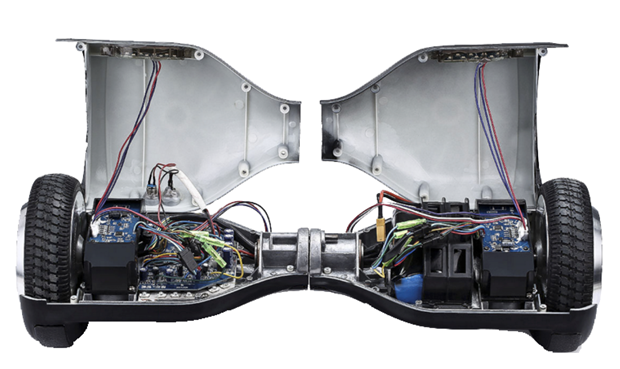How to know which hoverboards are safe?
Posted by Neda Afaque on 4th Oct 2017
Hoverboards, segways, e-scooters, e-bikes, and all other personal transportation devices are great futuristic means of short distance transportation that are eco-friendly. Hoverboards, in particular, have gained great popularity amongst all age groups. Although very fun to ride, safety concerns surrounding hoverboards have been preventing some people from investing in this new innovative and portable transportation device.
Concerns related to safety are not unfounded. Only a few days ago, there was a report of a house fire in Burlington caused by a hoverboard.
Such cases can be traced back to boom in hoverboard demand in recent years. To capitalize on this growing popularity, many unprofessional and uncertified factories began manufacturing hoverboards that failed to meet basic safety regulations and required certifications. These defective devices were often available at cheap prices in popup places, events, businesses, and online stores like Amazon and Ebay. It is no surprise that almost all hoverboard fires have been linked to lack of knowledge of sellers and to the ones purchased at the aforementioned locations.

Hoverboards are the result of a sophisticated self-balancing technology made possible through a variety of electrical circuit boards, electric motors, and lithium ion batteries. This is why, in addition to defective batteries, you must consider the possibility of having low quality bluetooth chips, non-certified electronic circuit boards, non-certified chargers, pinched or wrong wiring codes, or poor manufacturing and materials. Usage and maintenance e.g. overcharging hoverboards are also significant factors that can affect their performance and safety.
It is encouraging to see that companies have become more conscientious of safety guidelines. In 2015, Amazon became one of the first entities to mandate UL Certification as safety requirements. The following year in May 2016, Underwriters Laboratory introduced UL2272 Certification for Hoverboards, and UL2271 Certification for Li-Ion battery packs and chargers, the highest standards of safety observed to date. The certification is now mandatory in USA but major Canadian retailers have also followed suit. However, knock-off market is still very prevalent as buyers continuously seek cheaper devices. The next time you’re going hoverboard shopping, make the safe choice. Here are such guidelines to help you do so:
? Make sure your hoverboard and all its components are UL certified
The latest UL2272 certification is now available for hoverboards. Beware of fake UL logos especially when buying a device from small popup websites and businesses.
? Make sure your charger is UL certified
Look at the bottom of the charger to find a UL logo.
? See if the battery pack is UL certified
A UL2271 Certification or UL Logo should be present on the battery pack. This may be challenging to do as you need to open the batteries to see the logo.
?Only buy from legit businesses specialized in this technology
This may eliminate the need to individually verify all the above items as expert businesses tend ensure certified products. Just like your bicycles and cars, personal mobility devices require ongoing maintenance. This is why it is important that you choose someone who is well-versed in the product knowledge. Major retailers may not have full knowledge for hoverboards could be one of the many items offered by them.

